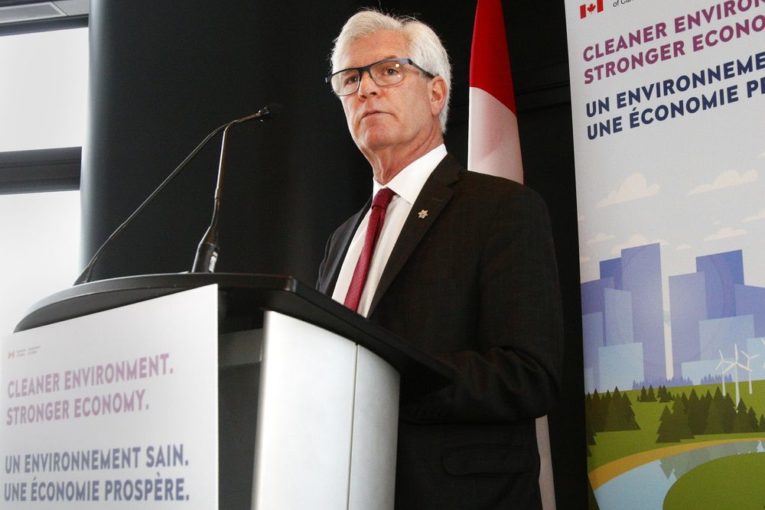
In one day the Government of Canada drastically reshaped the country’s 60-year-old energy regulatory landscape.
Goodbye, National Energy Board. Hello, Canadian Energy Regulator and Impact Assessment Agency of Canada.
The federal changes announced Thursday to increase certainty for approvals of energy and other resource-related projects, while far from perfect, do address some issues that have confounded the National Energy Board (NEB) for more than a decade.
The National Energy Board will transform into the Canadian Energy Regulator (CER), which will have a governance structure similar to that of the Alberta Energy Regulator. The chair and board of directors will be separate from the chief executive and hearing commissioners.
It means the CER — which will remain in Calgary — will not be in the position of judge and jury, as the NEB has found itself in recent years.
A second part of the regulatory shift is the creation of the Impact Assessment Agency of Canada. The new agency replaces the Canadian Environmental Assessment Agency, though it’s mandate goes further.
Some might say too far.
It will assess the impacts of projects encompassing economic, environmental, social and Indigenous issues. It is also where proponents of larger and designated projects will get an early indication of what’s needed to get approval or, conversely, to decide — before too much time and money is spent — whether to walk away.
Natural Resources Minister Jim Carr said the new framework will provide more certainty, and earlier in the process.
“It will be far more transparent and at a stage when heavy investment is required, proponents will know what the likelihood of success will be. That has been missing,” Carr said in Calgary.
The NEB, in recent years, had become the place where all grievances related to energy development came to be aired.
That expanded scope was never contemplated in legislation that created the National Energy Board, but it had slowly crept into the regulator’s mandate. It was not the place for public engagement, yet that’s what it had become.
Now there is such a place.
Yet there are still some missing links following Thursday’s announcement, including what constitutes a “designated” versus “non-designated” project. The government is putting that out to Canadians.
“There’s a project list and it will be discussed by Canadians … and the items on the project list would be the major ones that fall under federal jurisdiction and have major impact such as major pipeline projects, any operation that crosses provincial lines and be subject to federal review,” said Carr
“When they are undesignated then the CER will determine in a much shorter time frame, whether there will be an approval.”
A project deemed to be designated would be jointly reviewed by the IAAC and the CER. According to the New Canadian National Regulator Handbook released Thursday, the report from a joint assessment would feature two sections — one from the CER and the other from the impact assessment.
While eliminating duplication is positive, this approach means a project is de facto before two regulators. And when it comes to major or designated projects, it appears the IAAC will prevail.
Will the announced changes be enough to eliminate the uncertainty that has come to define the regulatory process in Canada?
In that context, Suncor CEO Steve Williams’ comments Thursday during his company’s quarterly earnings call, must be heeded.
“We’re having to look at Canada quite hard,” he said. “The cumulative impact of regulation and higher taxation than other jurisdictions is making Canada a more difficult jurisdiction to allocate capital in.”
And while the new legislation talks of reduced time lines for project approvals, what’s not specifically addressed is what stops and starts the clock.
Carr said it could only stop for legislated reasons, but what those are remain undefined.
In other words, the timeline for a non-designated project may be reduced from 450 days to 300, but does the clock stop when a proponent is answering questions from the regulator? Can questions be continuously submitted, keeping the clock paused indefinitely?
“We have seen the cancellation of Northern Gateway, Energy East and LNG projects. We are hearing from many sources: Canada, you are off our radar and you have a reputational problem,” said Tim MacMillan, president and CEO of the Canadian Association of Petroleum Producers
“This is an opportunity to make a step change on clarity and give confidence to investors and be clear and crisp what our regulatory system is, and what the goal-line is. I can’t tell you today that the framework that was put out today gets us there, because I believe we need a step change, but we are going to work with government to make this as good as possible.”
It’s the details that matter, and much depends on how the regulations unfold.
There are valid concerns about the how much bigger the scope of review will be under the IAAC and whether that agency will have sufficient energy-related expertise.
Some see Thursday’s announcement as another unnecessary layer of process; a move by the Liberal government to placate all constituents that could lead to paralysis rather than progress.
Success will be seeing project approvals not subject to further opposition because adequate consultation and assessment has taken place.
And that’s what must happen for Canada to shake its reputation as a place where major projects of significant value — in terms of investment and economic benefit — don’t happen.
Deborah Yedlin is a Calgary Herald columnist
You can read more of the news on source
